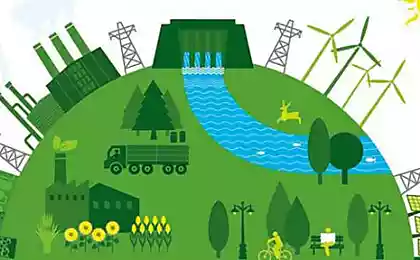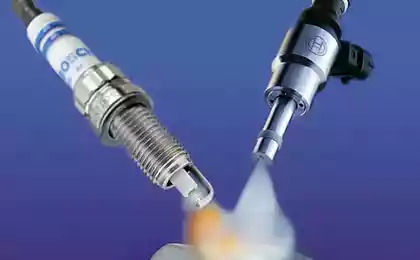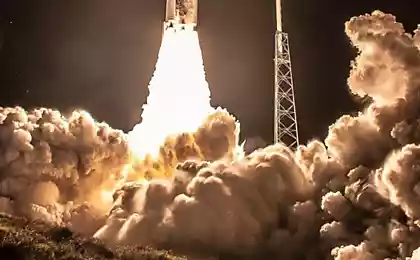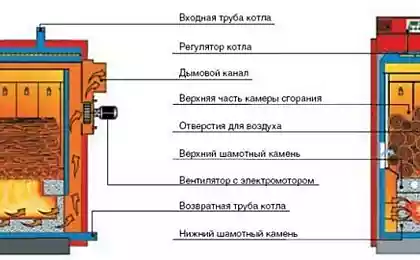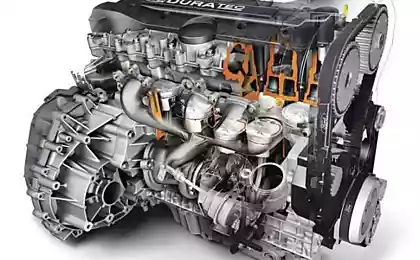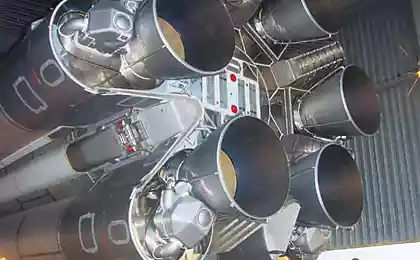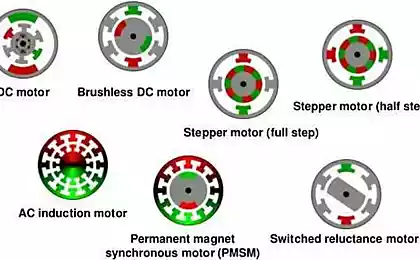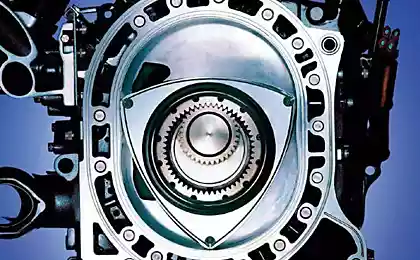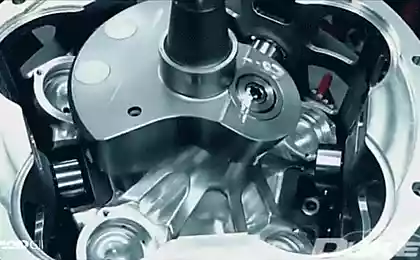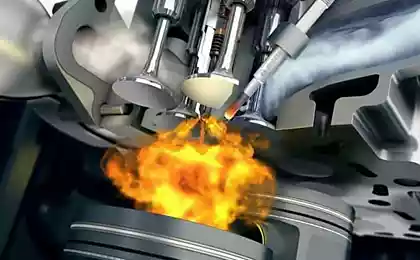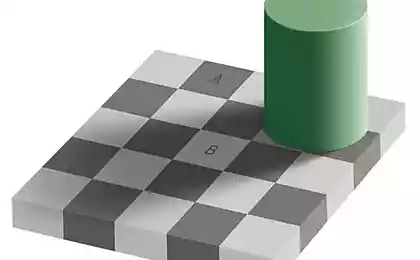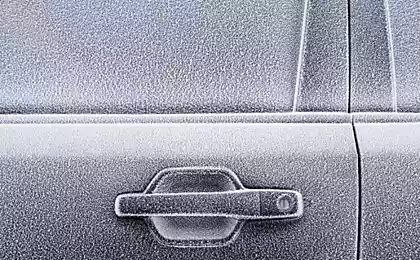190
Small H2O supplement saves fuel
Internal combustion engines may have survived the last decades, but manufacturers are not giving up. They make the most of this technology, optimizing engine design to improve efficiency and efficiency. Recently, it was reported about the innovation of Nissan, which invented an internal combustion engine with a variable compression ratio. Now, Bosch has announced its achievements. The German firm introduced the WaterBoost water injection system for simple modification of existing internal combustion engines.
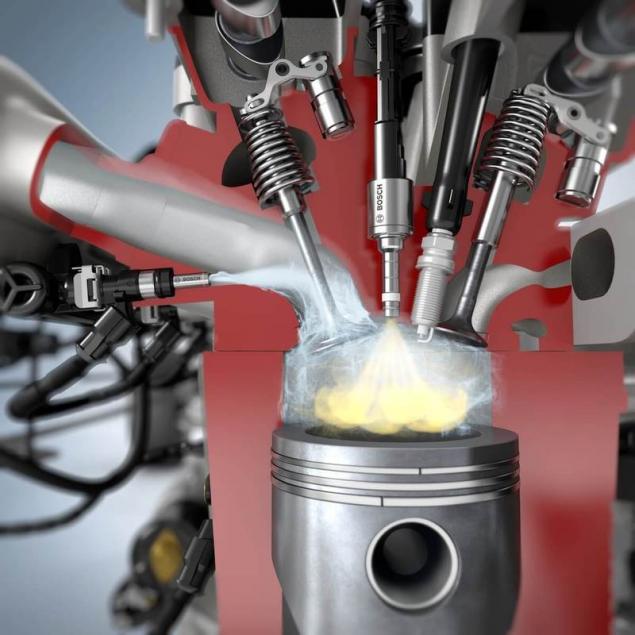
Even the most advanced internal combustion engine is wasting about a fifth of its fuel. For example, it is spent on the cooling system of the engine. In modern engines, a little additional fuel is injected into the combustion chamber not for combustion, but for evaporation from the walls, due to which the engine cools.
Bosch proposes to modify the fuel injection system: use water instead of gasoline when cooling the chamber. That is, the essence of the WaterBoost technology is that at high speeds in the engine a water pump is used, which injects a little water into the combustion chamber shortly before the fuel mixture is ignited.
Very little water is required: a few hundred milliliters per 100 km. Therefore, a small tank of water will need to be filled with distilled water every few thousand kilometers, which for most drivers will not be an overhead. It is even nice: pouring water, you know that this water will be used instead of gasoline (when cooling).
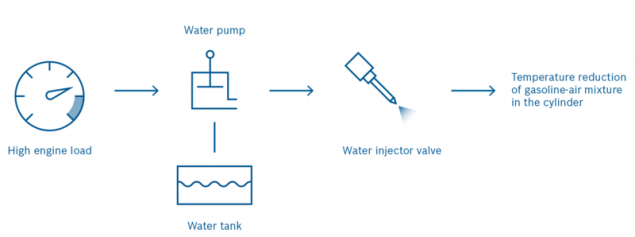
And if the water in the tank runs out, it is also nothing terrible, except that the torque will decrease slightly and fuel consumption will increase by several percent.
As shown by Bosch experiments, such a simple modification can reduce fuel consumption by several percent (up to 13%) without loss of power and torque. Savings are possible when the engine overheats at the highest speeds: for example, with a sharp acceleration or driving on the highway at high speed.
In addition to saving gasoline, evaporation of water also cools the engine better than evaporation of gasoline.
As an added bonus to fuel economy, CO2 emissions are reduced by 4%, making it easier for the engine to pass the strict environmental standards that apply to modern gasoline engines.
The most effective introduction of water injection will be for compact three- and four-cylinder engines. In other words, it is for those engines that are used in the most popular modern medium-sized cars.
But that's not all. In addition to fuel economy, the WaterBoost can add up to 5% power to turbocharged engines. The fact is that the addition of water saturates the injected air from the turbine with oxygen and increases the combustion rate of the mixture, allowing you to optimize the angle of ignition ahead – the angle of rotation of the crank from the moment at which the voltage begins to be applied to the spark plug to break the spark gap until the piston of the upper dead point.
The idea of ignition advance is to light the combustible mixture in advance, until the piston reaches the upper dead point. With the right choice of the moment of ignition, the gas pressure reaches a maximum value approximately 10-12 degrees of rotation of the crankshaft after the passage of the piston of the upper dead point.
By changing the angle of ignition advance and tweaking the settings of ignition timing, engineers can squeeze a little more power even from powerful turbocharged engines, even on sports cars.
The first car to introduce WaterBoost water injection technology will be the BMW M4 GTS with a six-cylinder turbo engine.
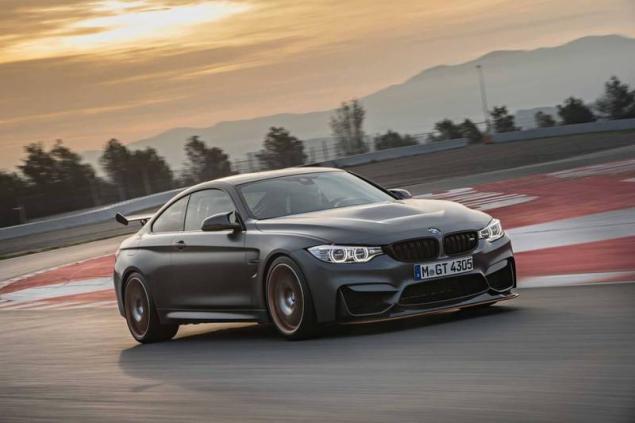
There is no information about the introduction of WaterBoost in cars of the average price category.
Bosch has extensive experience in the automotive industry. It was Bosch who in 1887 invented a safe detonation system for the air-fuel mixture of combustion engines from magneto. This ignition system is still used in cars. Prior to this invention, the mixture in the ICE was ignited through Daimler's calibre tubes with an open flame.
Bosch produces not only ignition systems, starters, but also many other automotive components. For example, recently established a serial production of electric motors for racing cards.
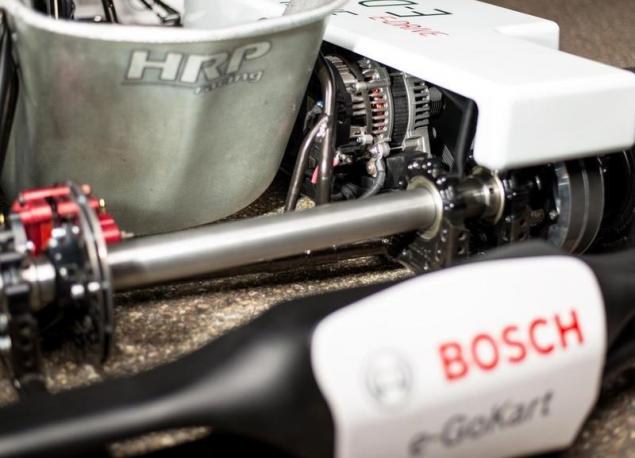
Electric motors are the future, but the engine is not going to give up without a fight.
“Our water injection shows that internal combustion engines still have a few tricks under the hood,” said Dr. Rolf Bulander, chairman of Bosch Mobility Solutions and board member of Robert Bosch GmbH.
Source: geektimes.ru/post/280018/

Even the most advanced internal combustion engine is wasting about a fifth of its fuel. For example, it is spent on the cooling system of the engine. In modern engines, a little additional fuel is injected into the combustion chamber not for combustion, but for evaporation from the walls, due to which the engine cools.
Bosch proposes to modify the fuel injection system: use water instead of gasoline when cooling the chamber. That is, the essence of the WaterBoost technology is that at high speeds in the engine a water pump is used, which injects a little water into the combustion chamber shortly before the fuel mixture is ignited.
Very little water is required: a few hundred milliliters per 100 km. Therefore, a small tank of water will need to be filled with distilled water every few thousand kilometers, which for most drivers will not be an overhead. It is even nice: pouring water, you know that this water will be used instead of gasoline (when cooling).

And if the water in the tank runs out, it is also nothing terrible, except that the torque will decrease slightly and fuel consumption will increase by several percent.
As shown by Bosch experiments, such a simple modification can reduce fuel consumption by several percent (up to 13%) without loss of power and torque. Savings are possible when the engine overheats at the highest speeds: for example, with a sharp acceleration or driving on the highway at high speed.
In addition to saving gasoline, evaporation of water also cools the engine better than evaporation of gasoline.
As an added bonus to fuel economy, CO2 emissions are reduced by 4%, making it easier for the engine to pass the strict environmental standards that apply to modern gasoline engines.
The most effective introduction of water injection will be for compact three- and four-cylinder engines. In other words, it is for those engines that are used in the most popular modern medium-sized cars.
But that's not all. In addition to fuel economy, the WaterBoost can add up to 5% power to turbocharged engines. The fact is that the addition of water saturates the injected air from the turbine with oxygen and increases the combustion rate of the mixture, allowing you to optimize the angle of ignition ahead – the angle of rotation of the crank from the moment at which the voltage begins to be applied to the spark plug to break the spark gap until the piston of the upper dead point.
The idea of ignition advance is to light the combustible mixture in advance, until the piston reaches the upper dead point. With the right choice of the moment of ignition, the gas pressure reaches a maximum value approximately 10-12 degrees of rotation of the crankshaft after the passage of the piston of the upper dead point.
By changing the angle of ignition advance and tweaking the settings of ignition timing, engineers can squeeze a little more power even from powerful turbocharged engines, even on sports cars.
The first car to introduce WaterBoost water injection technology will be the BMW M4 GTS with a six-cylinder turbo engine.

There is no information about the introduction of WaterBoost in cars of the average price category.
Bosch has extensive experience in the automotive industry. It was Bosch who in 1887 invented a safe detonation system for the air-fuel mixture of combustion engines from magneto. This ignition system is still used in cars. Prior to this invention, the mixture in the ICE was ignited through Daimler's calibre tubes with an open flame.
Bosch produces not only ignition systems, starters, but also many other automotive components. For example, recently established a serial production of electric motors for racing cards.

Electric motors are the future, but the engine is not going to give up without a fight.
“Our water injection shows that internal combustion engines still have a few tricks under the hood,” said Dr. Rolf Bulander, chairman of Bosch Mobility Solutions and board member of Robert Bosch GmbH.
Source: geektimes.ru/post/280018/
How to insulate an attic: answers to the most pressing issues
The technique of "Healing Memory" of migraine and severe headaches
